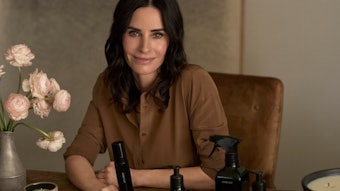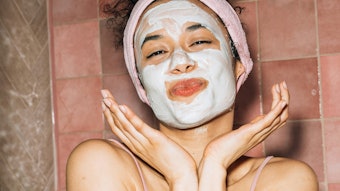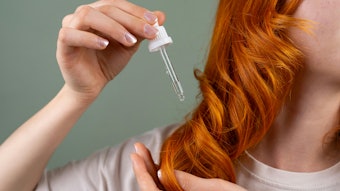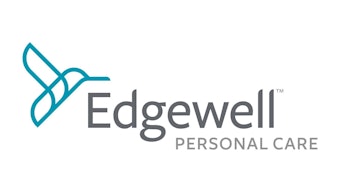While bath and shower products posted global sales of $23.6 billion in 2006, with particularly strong sales of products that mimic spa treatments or are marketed as providing luxurious and stress-free moments, bar soaps have seen a downturn in popularity. In the U.S., bar soaps have seen little growth in an overall segment that itself shows little growth, according to Euromonitor International, which forecasts bar soaps to see a 4.5% decline through 2011. The global picture mirrors this trend. In various regions, liquid soaps and body washes consistently outperform bar soaps.
With this downturn, optimism may be difficult to come by, yet some innovative delivery systems and trends are adding value to bar soaps that could infuse the category with new life.
Natural and Organic Base
Trends in organics and natural products have carried over into the bar soap category. Consumers are seeking soaps that combine natural and organic ingredients with efficacy, and manufacturers are answering the demand.
“More soap producers are gearing up for the organic market by having their facilities certified as organic manufacturing sites and buying organic raw materials,” said Sue Jonas, vice president of product development, Crabtree & Evelyn.
While utilizing these organic raw materials, manufacturers are also making changes to the oils used within the soap base. “Where natural vegetable oils were used in the past, now organic palm and soy oils are being used more frequently,” said Heather Helpern, product development coordinator, Kiss My Face Corporation. For example, Twincraft currently offers a 100% preservative- and EDTA-free soap base, as well as a certified organic soap base.
“Our focus is innovation and staying ahead of the trends—setting the trends really,” said Barbara Devine, director of marketing, Twincraft Soap. “We work with our customers to determine what’s going to sell for them and what’s going to appeal to their customer base.”
Bar soaps suit consumers who strive for an overall natural lifestyle. “They like the straightforward simplicity and old-fashioned sensibility of a bar, and there is less packaging that needs to be disposed of compared to a liquid cleanser,” said Jonas.
Bar soap attracts consumers with environmental concerns as well. “From an environmental stance, bar soap is far superior. The ingredients are more natural and friendly to humans and the environment,” said Devine. “There is less waste and it’s often a paper package that is biodegradable versus a plastic container sitting in a landfill.”
Within the industry, bar soaps have the capacity to carve an even more unique niche in the market through exotic ingredient offerings and fragrance-free options. “Bar soaps are becoming more specialized, creating a niche market. Adding exotic specialty ingredients takes soaps out of the ordinary and makes them unique,” said Helpern.
Capitalize on the Experience
With that in mind, bar soaps need to build on natural-occurring selling points, such as the inherent multisensory experience, to jump-start the category.
“Working with a bar sometimes opens up a greater range of creativity beyond liquid cleansers,” said Jonas. “A bar gives us the opportunity to work with the shape, weight, color, texture, lathering pattern and skin feel, so we can select the appropriate sensory characteristics to match up with a specific fragrance and engage a consumer in a multidimensional experience.”
As a result, bar soaps provide the capacity to create an individualized experience for consumers who want more than just clean skin.
“An ever-increasing level of design sophistication can be seen in the products coming from the workshops of small artisan soap makers. They are bringing energy, excitement and innovation to the category through their use of unusual fragrance combinations, their creation of interesting textures and hand-detailed packaging,”
said Jonas.
Consumers increasingly seek products with value-added benefits and ingredients, such as those that fight acne, wrinkles and cellulite or provide sunscreen actives—and the value of these ingredients has been successfully touted in liquid soaps, playing no small role in the overall success of such products. Lacking the ability to out-position liquids in a value-added ingredient strategy, bar soaps will continue to find it difficult to compete without a strong emphasis on the ability to satisfy other personal preferences, which play a large role in the bath and body category. Further, savvy brands can appeal to a larger segment of the market through strategic use of bar soaps.
“A body care line would want to include a bar soap to cater to a wider demographic,” said Helpern. “Bar versus liquid is a personal preference, and including both would broaden the line’s appeal, particularly as men prefer bar soaps.”
Bar soaps provide a finishing touch and revenue for a bath line.
“Innovative bar soaps are a great opportunity to generate incremental revenue at significant margin. Plus, our customers typically see a lift in the entire line when a bar soap is added,” said Devine. “[Brands] can grow their market share, create line extension opportunities, enhance the sale of other skin care products and, perhaps most importantly, provide a unique and compelling story—bar soap increases a consumer’s connection with your brand.”
Bar soaps, while not currently forecasted to grow, could be revived as a category with strategic brand moves. By focusing on what bar soaps bring to a line versus what they lack, brands can capitalize to achieve overall growth.










